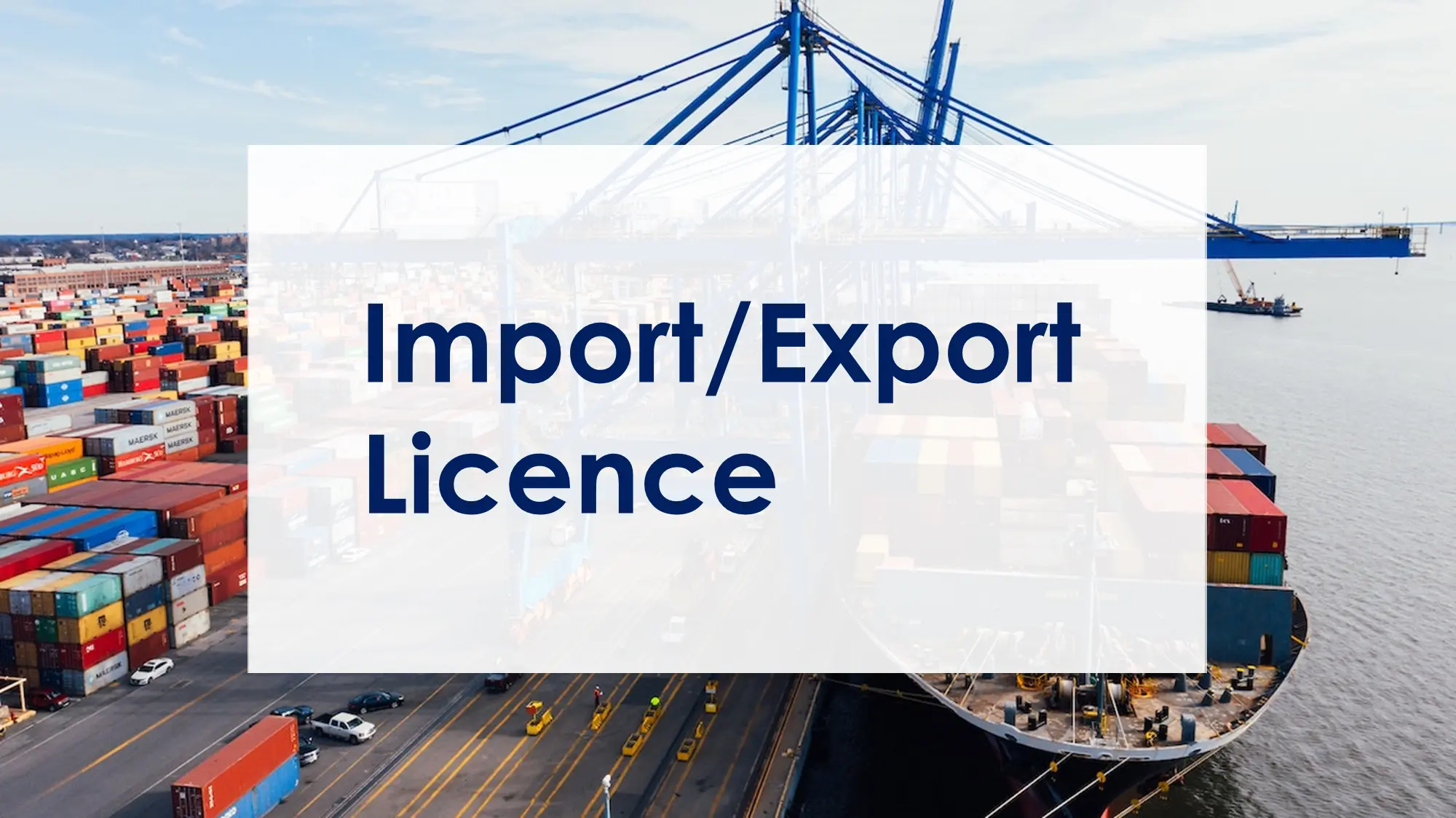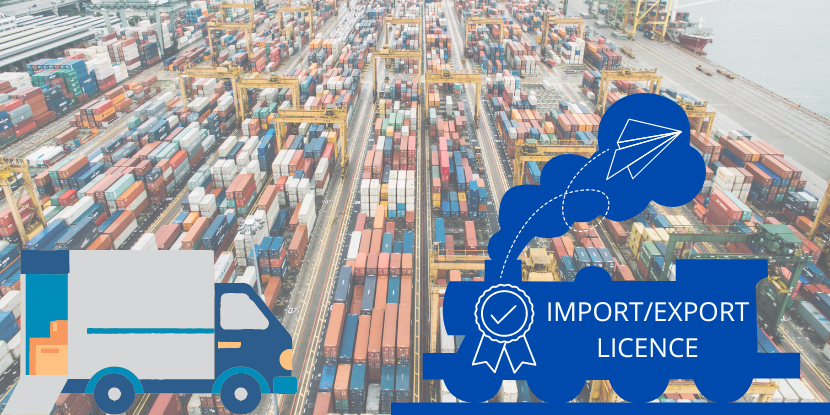
An integral aspect of international shipping is obtaining an import and export license in India. Although not all goods need a license for international commerce, it is crucial to know which goods are needed and which federal authorities are in charge of issuing the necessary permits before launching an import/export company.
An import/export license is necessary for the shipment of some goods into or out of the United States. Careful investigation is necessary to determine if a product requires a license or not. If a product needs a license, you must submit an application for a license to the regulatory body in charge of that product. You can find out when and how to get a BIS license for import/export by using the information provided by Induce India in this fast and simple guide.
Brief On Import/Export License
To export or import items into or out of India, registered or unregistered businesses must get an bis certificate for import in india. The Government of India has made it simpler for applicants to submit and attach the necessary paperwork by introducing online registration for import and export permits.
The General Directorate of Foreign Trade has issued a digital certificate for this license. However, after all of the application’s data has been verified as accurate, it usually doesn’t take long for the license to be issued—it might take up to 5 business days.
You would need your Import Export Code at the – if you were a merchant.
- Customs officials.
- when an importer uses the bank to transmit money abroad.
- when a shipper exports goods through a customs port.
- when a bank account is instantly deposited with money for an exporter.
Documents Required for Import/Export Licence
On the DGFT online Portal, the applicant must upload scanned copies of all required papers together with the required form. The necessary papers are:
- Proof of the applicant’s identity
- Delete the current bank account’s Cheque Copy.
- Proof of a business address.
- Proof of business registration.
If the applicant has to make any modifications (in the details) after registering the license, certain extra papers must be presented. Additionally, the kind of business registration may be a factor. All materials must be sent in a GIF/JPEG file format with a maximum file size of 5 MB. The applicant may face legal or criminal consequences for giving fraudulent or inaccurate information.

Registration Cost for Import/Export Licence
The government charge for submitting a new application is Rs. 500, and it may be paid either by demand draft or an EFT TR 6 Challan.
The TR 6 Challan is a manual/offline payment alternative for candidates without debit or credit cards. However, it should only be presented at Central Bank of India branches.
If you give a lawyer or agent permission to submit an application on your behalf, you will need to pay a professional charge. Step-by-step instructions are provided during the whole registration procedure by Quick Business, a legal registration company. The professional charge covers the cost of creating the necessary paperwork and submitting the application.
After the BIS license for Import and Export in India has been registered, the applicant must pay a government fee of Rs. 200 to modify or amend any of the license’s data.
Registration Procedure for Import/Export Licence
The registration process for an import-export license is very straightforward, but it’s always a good idea to speak with a qualified lawyer to avoid providing inaccurate information on the form.
To continue with the further stages, the applicant must submit their PAN information.
- Ayaat Niryaat Form (ANF 2A): Complete the online form by entering all the essential information and uploading any necessary documents.
- Make the payment using an electronic funds transfer from a bank that is acceptable.
- You can print the application for future use when it has been submitted successfully.
- Before issuing an import-export license, the department will examine the application and make sure everything is correct.
You might also need to physically turn in the form at the Directorate General of Foreign Trade office that is closest to your place of business. Only HDFC Bank, State Bank of India, Punjab National Bank, ICICI Bank, Central Bank, and UTI Bank are allowed as payment methods. The applicant will receive a link through SMS or email to download and print the e-IEC Certificate after registering.
Advantages of an Export Import License
BIS license for import/export encourages foreign trade in India and presents several prospects for growth.
- Due to a common registration procedure, the government is able to monitor the movement of imports and exports that are restricted or unlawful.
- Once the license is registered in your name, you are no longer required to comply.
- To assist importers and exporters in paying customs fees, the Indian government has introduced programs like the Merchandise Exports from India Scheme (MEIS) and the Service Exports from India Scheme (SEIS).
- The import-export license is perpetual and does not need to be renewed or reapplied for.
Government Programs
In order to encourage international business, the government has created a number of programs under the Foreign Trade Policy that provide varied advantages to Indian importers and exporters.
- Incentives are given to exporters under the Merchandise Exports from India Scheme in the form of freely transferable credit slips that can also be used to pay service tax, excise duty, or customs charges. These are available at a foreign currency rate ranging from 2% to 5%.
- Through the Service Exports from India Scheme, the government also provides incentives ranging from 3 to 5 percent to all service providers that supply services outside of India.
- A minimum value addition of 20% must be met for products to be imported duty-free under the duty-free import authorization scheme.
- On items created from inputs that have already paid their taxes, you may also make a claim for a duty refund.
IEC Exclusivity
Without an import-export license, no trader may import or export. A certain category is, nevertheless, excluded from IEC registration.
- A person who has no connection to production or commerce and is only importing or exporting items for their own consumption.
- Ministries or Departments of the Central or State Government.
- An individual who imports or exports commodities from or to China, Myanmar via the Indo-Myanmar border, or Nepal when the CIF value does not exceed Rs (single consignment).
- In the case of Nathula port, the exemption ceiling (applicable) is Rs. 1 Lakh.
India is a growing market for various imported goods, but to ensure quality and safety standards, the Bureau of Indian Standards (BIS) regulates the import of specific products. The BIS Certificate for Import in India is a mandatory requirement for certain categories of goods, ensuring compliance with Indian quality norms. Induce India provides complete assistance in obtaining BIS certification and other necessary import licenses.
What is a BIS Certificate for Import?
The BIS certification is issued by the Bureau of Indian Standards (BIS), which ensures that imported products meet the necessary safety, quality, and performance benchmarks. Without this certification, restricted items cannot be imported or sold in India.
Why is BIS Certification Important for Import?
Regulatory Compliance – Certain products require BIS certification for customs clearance in India.
Quality Assurance – Ensures that imported goods meet Indian safety and quality standards.
Market Access – Without BIS certification, selling restricted goods in India is prohibited.
Consumer Trust – Certified products gain consumer confidence and credibility in the Indian market.
Types of BIS Certification for Import
ISI Mark Certification – Required for domestic and imported products falling under mandatory certification.
Compulsory Registration Scheme (CRS) – Covers electronics and IT products that must meet specific safety standards.
Foreign Manufacturers Certification Scheme (FMCS) – For international manufacturers exporting regulated products to India.
Documents Required for BIS Certification for Import
Business registration proof
Test reports from BIS-approved laboratories
Manufacturing details and process flow
Product specifications and samples for testing
Authorized signatory details
Import Export License in India
To start an import-export business in India, obtaining the necessary licenses and certifications is crucial. Apart from BIS certification, an Import Export License (IEC) is a fundamental requirement.
What is an Import Export Business License?
The Import Export Code (IEC) is issued by the Directorate General of Foreign Trade (DGFT) and is mandatory for conducting international trade in India. It is a unique 10-digit code required for customs clearance, foreign transactions, and shipping goods internationally.
Steps to Obtain an Import Export License
Register the Business – Get your company registered under the appropriate legal structure.
Apply for IEC – Submit an online application on the DGFT website with necessary documents.
GST Registration – Required for tax compliance in international trade.
Obtain BIS Certification – If your product falls under mandatory certification.
Customs Clearance Registration – Register with ICEGATE for seamless customs operations.
Documents Required for Import Export License
PAN card of the business
Aadhar or passport of the business owner
Business registration certificate
Bank details and canceled cheque
GST registration
How Induce India Can Help?
At Induce India, we assist businesses in obtaining BIS certification, IEC registration, and other import-export licenses hassle-free. Our team ensures end-to-end compliance, making international trade smoother for your business.
For expert assistance in BIS certification and import-export licensing, contact Induce India today!
Free Call Back
Contact
- 101, Khudi Ram Bose Marg, Pratap Nagar, Mayur Vihar, New Delhi, Delhi, 110091
-
011-203116227
+91-7503304082 - [email protected]
Brochure
INDUCE INDIA official brochure to explore about all the services and products. Please download to explore.
